Build a Lemon Battery
Did you know that a lemon battery can power a light bulb or a clock? Did you know that other fruit can become a battery as well? Today I’m partnering with Green Works to tell you about StemBox – a monthly subscription service aimed at girls ages 7-13. Green Works is sponsoring this month’s STEM experiment to build a lemon battery.
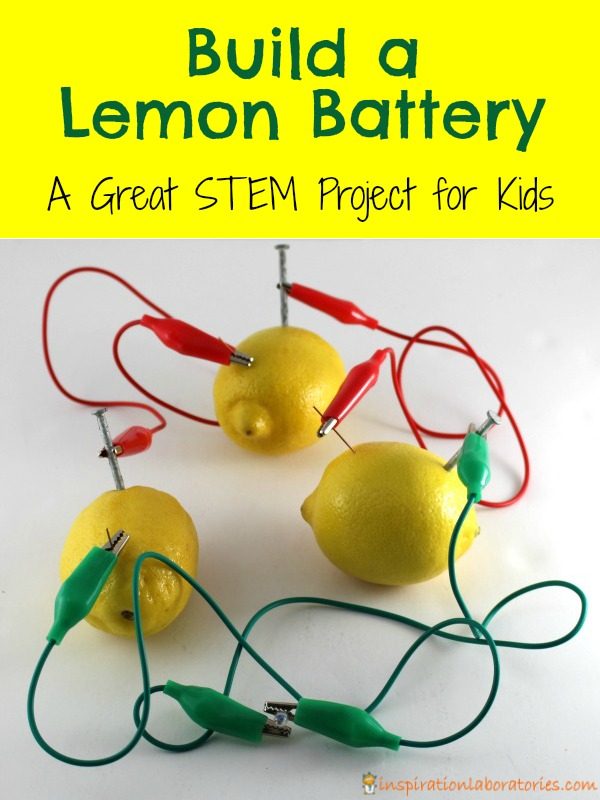
Build a Lemon Battery
We invited Aiden’s friend, Lindsey to come over and explore the StemBox with us. I love that all of the materials we needed (minus the fruit) were included in the box and the instructions were easy for the kids to follow. There was also an explanation of how the experiment worked and suggestions for further experimentation.
Here’s what the box looks like when you open it up.
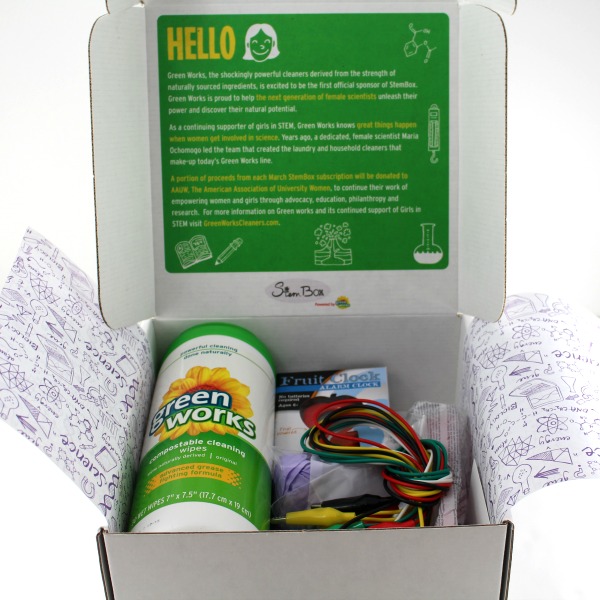
And here is what’s inside (plus the lemons you’ll need).
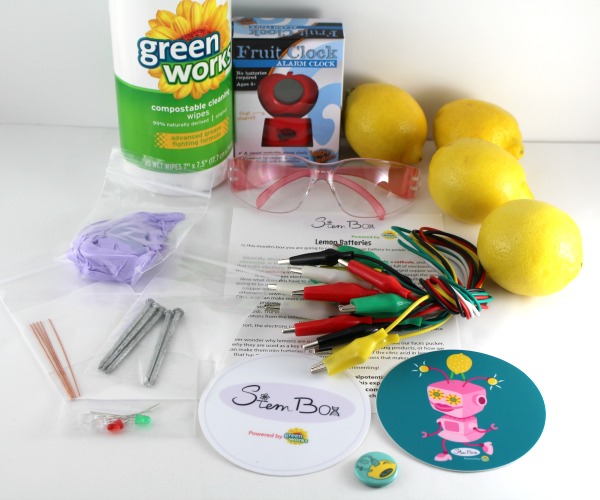
The directions tell you to put on safety glasses and gloves. Lindsey was all about dressing the part of a scientist.
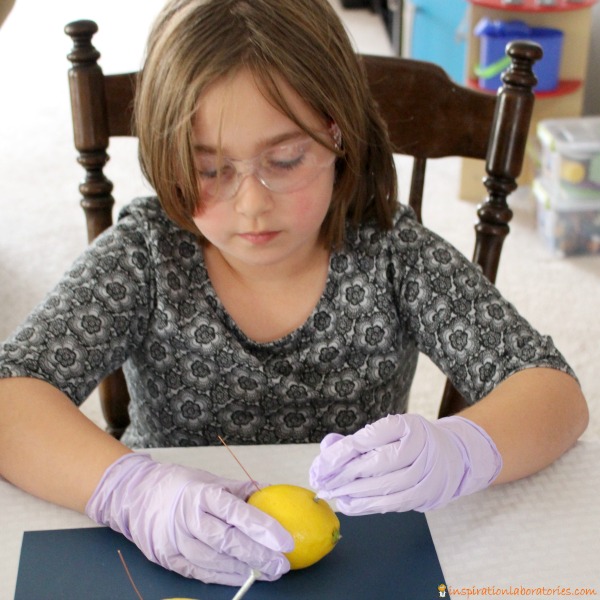
Aiden and Lindsey added the copper wire and zinc nails to the lemons and connected them with the wires. The LED was added to complete the circuit. Lindsey is happy with the finished battery. 4 lemons light up the LED.
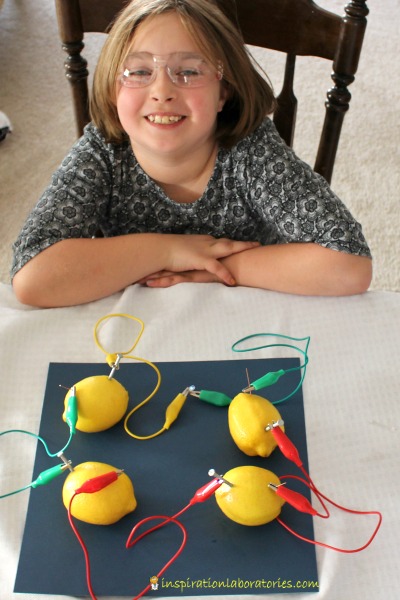
Will 3 lemons work? They took away one lemon and reconnected the LED.

Yes! 3 lemons works, too. What about a different type of fruit? Will a lime work in place of a lemon?
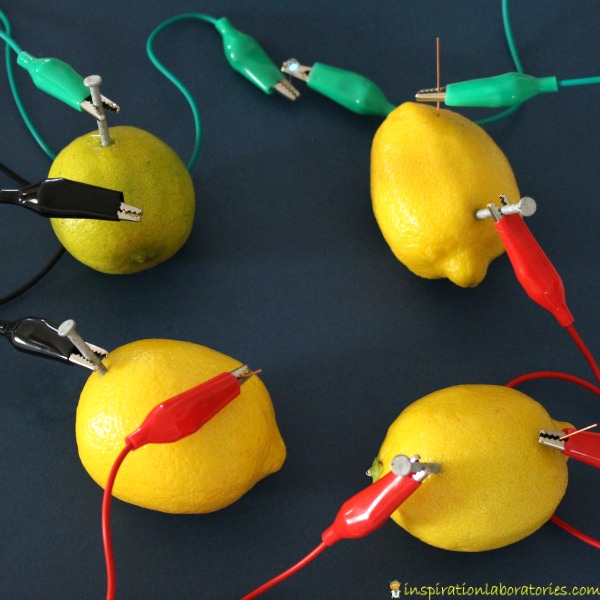
Yes! A lime works, too. (Even an old lime.) What happens if we replace one of the lemons with an orange.
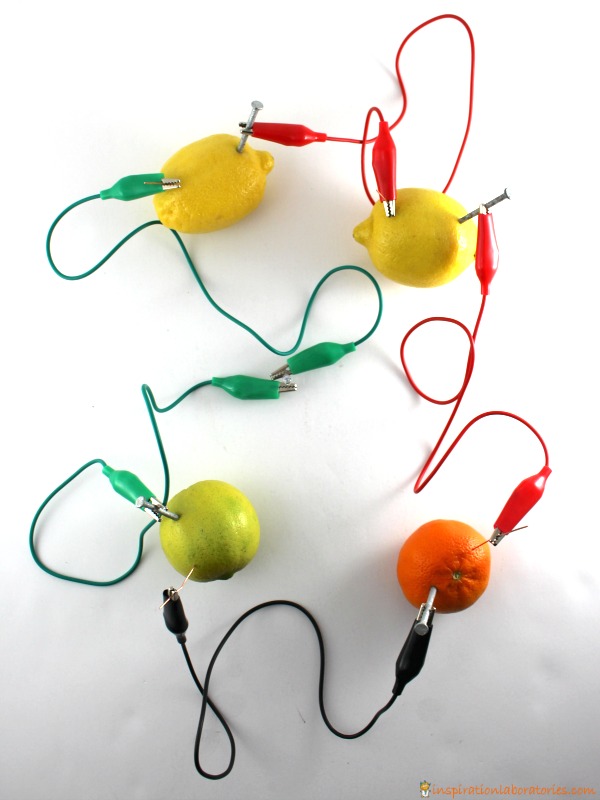
Yes! An orange works, too!
Inside the box was also a fruit powered clock. The clock says it will work with a variety of fruits even apples. It will work with just water as well. The kids wanted to test it with an orange.

The clock worked for at least a week. The orange molded so we tossed it out. We still wonder how long the orange could power the clock.
More About the StemBox by Green Works
A portion of proceeds from each March Green Works StemBox subscription will be donated to AAUW, The American Association of University Women, to continue their work of empowering women and girls through advocacy, education, philanthropy, and research. For more information on Green Works and its continued support of girls in STEM visit GreenWorksCleaners.com.
You can subscribe to StemBox here.
Be Inspired by a Book
Books are a great way to inspire science learning. There are two books that we’ve read recently that go perfectly with learning about batteries or female scientists. Amazon affiliate links are included below.
Girls Think of Everything: Stories of Ingenious Inventions by Women by Catherine Thimmesh features women inventors. The book tells the stories behind how they created their inventions. After reading this book, girls will surely be inspired to create something of their own.
When Charlie McButton Lost Power by Suzanne Collins is about a boy who likes computer games. A thunderstorm knocks out the power in his house and he is on the search for batteries. What if he had some lemons and a few other supplies handy? Could he make a battery to power his devices? Probably not. But it would be fun to discuss this with your kids. Also, if Charlie were building a lemon battery, maybe he’d forget about the computer games. In the story, he finds his little sister to be fun to play with (and she doesn’t need batteries).
This post is a part of the Storybook Science series. Every day in March, bloggers will be sharing science activities inspired by a book. Be sure to follow along!
Have you ever built a lemon battery? What are your suggestions for encouraging girls in STEM?
This is a sponsored conversation written by me on behalf of Green Works . The opinions and text are all mine.


